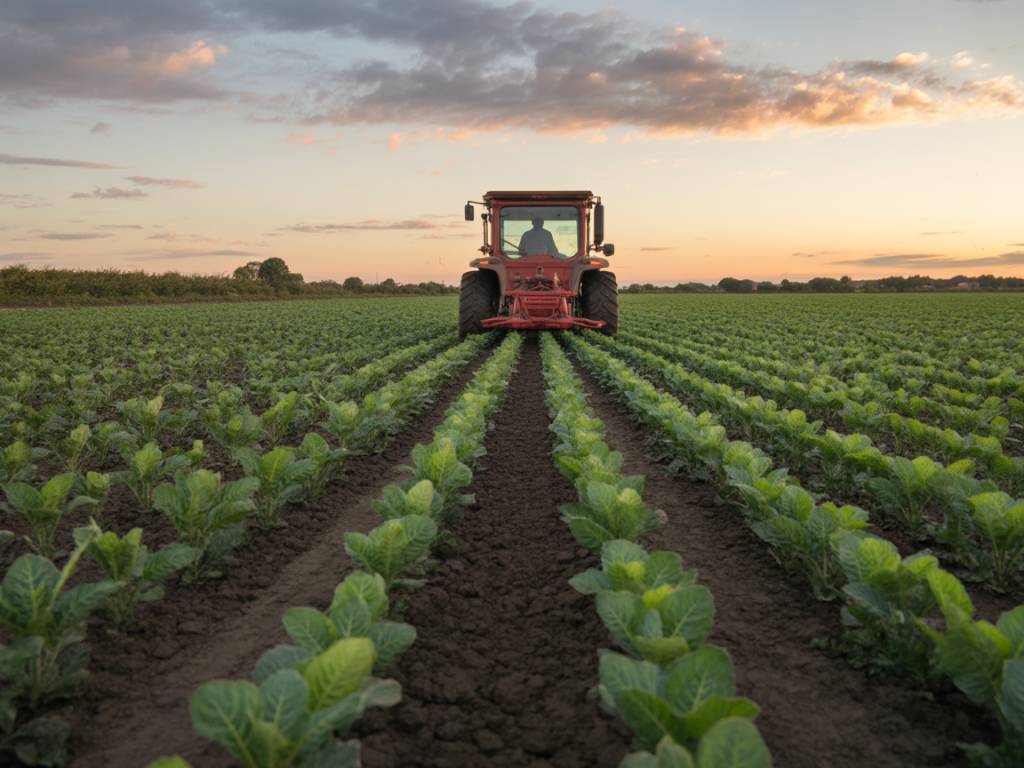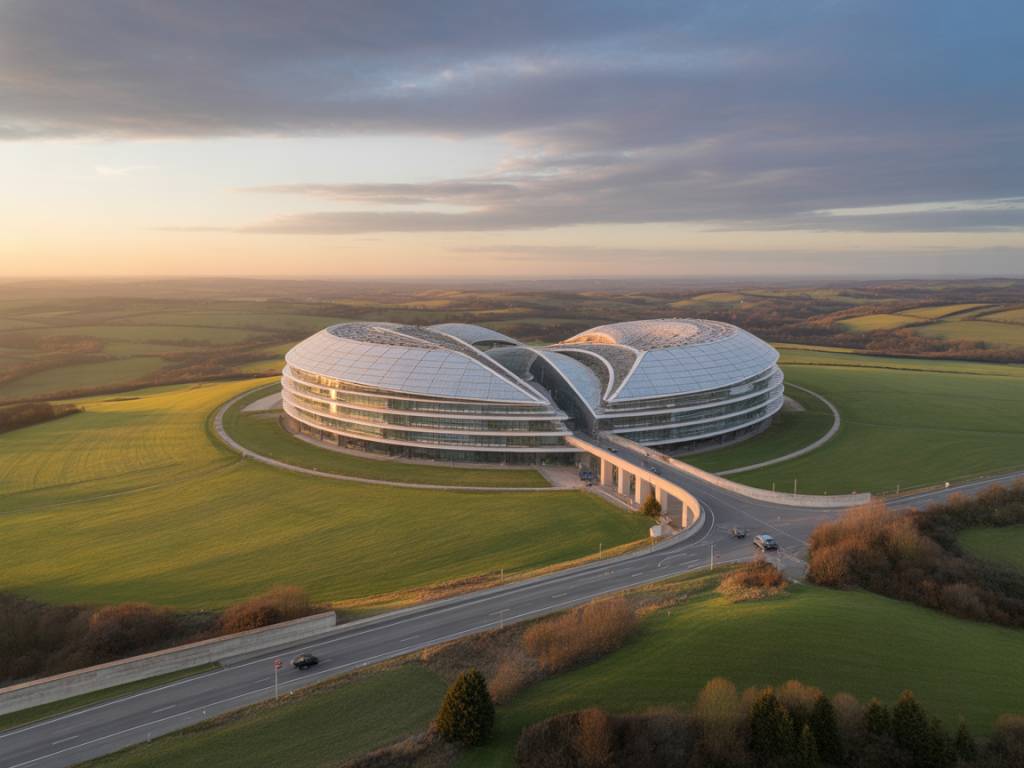AI-Powered Precision Farming is Becoming Standard
For decades, the agricultural sector has been at the crossroads of tradition and innovation. Today, it stands on the brink of a data-driven revolution. Artificial Intelligence (AI) and machine learning technologies are fundamentally reshaping how farmers plan, monitor, and optimize their operations — down to the square meter.
Platforms such as John Deere Operations Center or xFarm Technologies combine satellite imagery, drone data, weather inputs, and IoT sensor feeds to provide real-time analyses of crop health, soil moisture, nutrient needs, and more. These insights enable smarter input use, reduce waste, and maximise yield potential — all while improving long-term soil sustainability.
According to McKinsey, farms using AI-driven precision technologies have seen input cost reductions of up to 20% and increases in yields by 10-15%. For agribusiness leaders, the implication is clear: those not investing in agri-data infrastructures today may find themselves outpaced tomorrow.
Robotics are Redefining Field Labor
In countries struggling with agricultural labor shortages — France, the U.S., Japan — robotics are not a novelty, but a necessity. From autonomous weeding machines to robotic fruit pickers, agritech startups are racing to automate highly repetitive and physically demanding tasks.
French company Naïo Technologies is one such pioneer. Their lineup of electric, autonomous robots, like Oz and Ted, are designed to operate independently for hours, performing precision weeding between rows of carrots, salads or vines with minimal human supervision.
Meanwhile, in California, startup Agrobot is perfecting AI-guided strawberry harvesters capable of identifying ripe fruits and delicately detaching them via robotic arms. Is this the end of manual picking? Not quite. But for high-labor cost markets and specialty crops, robotics could make the difference between margin pressure and profitability.
Blockchain is Building Trust Across Agrifood Chains
Traceability is no longer a niche concern—it’s a market demand. Consumers want to know where their food comes from. Retailers want guarantees on quality and sourcing. Agribusinesses want more transparency to manage risks. Blockchain technology is proving to be a critical enabler.
By recording transactions on a secure, decentralized ledger, blockchain allows each stakeholder — from smallholder farms to exporters to final retailers — to view and verify key data in real time. This includes origin, handling times, storage temperatures, and certifications.
Walmart has already mandated the use of blockchain-based tracking for leafy greens supplied to its U.S. stores. Similarly, Carrefour uses IBM’s Food Trust platform to trace meat, milk, and some fruits in Europe. The result? Fewer product recalls, reduced food fraud risks, and enhanced consumer confidence.
For agribusiness players seeking to enter or expand into global markets, blockchain isn’t just about transparency — it’s about competitive edge.
Vertical Farming is Scaling Up (and Going Urban)
What happens when agriculture moves indoors? Yields go up, water use goes down, and supply chains get shorter. Vertical farming — the practice of cultivating crops in vertically stacked layers under controlled environmental conditions — is moving from pilot to scale, particularly in urban settings.
Companies like Infarm (Germany), AeroFarms (U.S.), and Agricool (France) are deploying modular, high-tech farms powered by hydroponics, LEDs, and AI climate control. These systems use up to 95% less water than traditional agriculture and can operate independently of seasonal cycles or land availability.
From Paris supermarkets to Tokyo office buildings, vertical farms are popping up where consumers live and shop. This proximity reduces the need for long-haul logistics, slashes food waste, and responds to growing demand for fresh, pesticide-free produce.
That said, vertical farming is capital-intensive and energy-hungry. Profitability hinges on scale, automation, and smart energy use — making ecosystem partnerships and government incentives crucial for viability at national levels.
Agri-Carbon Markets are Creating New Revenue Streams
Carbon neutrality isn’t just a buzzword in the industrial world — it’s becoming a tangible revenue opportunity for the agricultural sector. Through mechanisms such as agri-carbon credits, farmers can monetize efforts to sequester carbon in soil, avoid emissions, or adopt regenerative practices.
In France, the Label Bas-Carbone provides a framework for evaluating and certifying emissions-reducing projects in farming. Crédit Agricole, Nestlé, and Danone are among the sponsors purchasing these credits to offset their own emissions footprints.
Companies like Soil Capital or Agreena are building platforms to support farmers through the technical, agronomic, and financial steps required to generate credits. For example, switching from conventional tillage to cover cropping can generate up to 2.5 tonnes of CO₂ equivalent per hectare, according to ADEME’s estimations.
The challenge? Measurement and verification. Reliable MRV (Measurement, Reporting, Verification) systems are crucial to avoid greenwashing and ensure that credits carry actual value. But as standards evolve and technologies improve, agri-carbon markets could provide both environmental and economic resilience for agro-industrial stakeholders.
What Does This Mean for Agribusiness Leaders?
Incorporating these five tech trends is more than a matter of adopting tools — it’s about shifting operational paradigms. The agriculture industry is being redefined by data-centric decision making, cross-sector collaborations, and global sustainability imperatives.
Are you investing enough in data infrastructure to leverage AI’s yield optimization potential? Can you access the financing and technical support needed to integrate robotics or blockchain into your value chain? Are you preparing your teams to manage not only crops and machinery, but also carbon assets or compliance reports?
These aren’t rhetorical questions — they’re strategic priorities.
In a landscape shaped by climate volatility, urban pressures, and shifting dietary demands, technology is not simply an add-on. It’s a differentiator. Early adopters who integrate innovation thoughtfully and strategically will set the pace — and reap the benefits — of tomorrow’s agribusiness models.




